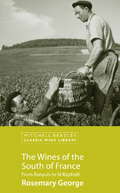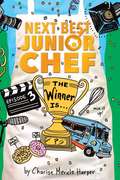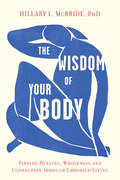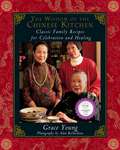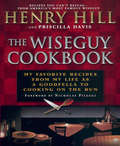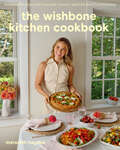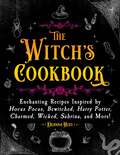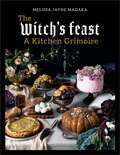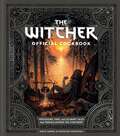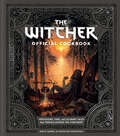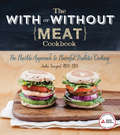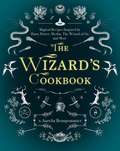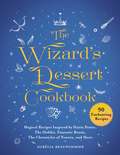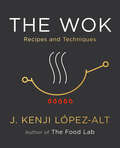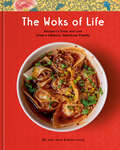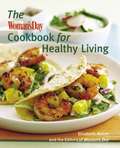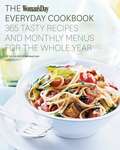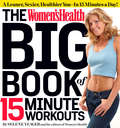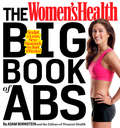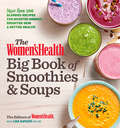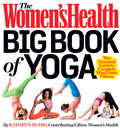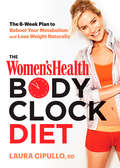- Table View
- List View
The Wines of the South of France
by Rosemary GeorgeKnown traditionally for its dramatic landscapes, the South of France is becoming one of the most vibrant and exciting of French vineyard areas. Every key wine area is covered from Banyuls on the Spanish border to the island of Corsica. The key wine producers and their wines are featured, with details of the regions, laws and grape varieties. The author reveals the fascinating developments in the vineyards and the cellars throughout this region's many wine-producing locations and how new appellations are more regularly rewarded here than in any other wine region in France.
The Wines of the South of France: From Banyuls To St. Raphael (Classic Wine Library)
by Rosemary GeorgeKnown traditionally for its dramatic landscapes, the South of France is becoming one of the most vibrant and exciting of French vineyard areas. Every key wine area is covered from Banyuls on the Spanish border to the island of Corsica. The key wine producers and their wines are featured, with details of the regions, laws and grape varieties. The author reveals the fascinating developments in the vineyards and the cellars throughout this region's many wine-producing locations and how new appellations are more regularly rewarded here than in any other wine region in France.
The Winner Is . . . (Next Best Junior Chef #3)
by Charise Mericle Harper Aurélie Blard-QuintardThe thrilling final episode in the zesty series for fans of kids' cooking competitions. It's the season finale and only two contestants remain. Who will take the cake and earn the title of Next Best Junior Chef? Two talented junior chefs have sliced and diced their way into the finale of Next Best Junior Chef. This week's theme: innovation. Which junior chef will rise to the top and earn the title of Next Best Junior Chef? And whose goose is cooked? Two contestants compete on- and off-camera, but only one will win the whole enchilada. This is a finale you won't want to miss! Bonus: includes real cooking techniques for the aspiring young chef!
The Wisdom of Your Body: Finding Healing, Wholeness, and Connection through Embodied Living
by Hillary McBrideFrom the host of the hit CBC podcast Other People’s Problems comes an invitation to unlearn the lies about your body that make you feel less-than, and to learn to love the home where your life happensIn The Wisdom of Your Body, clinical therapist and award-winning researcher Dr. Hillary McBride offers a pathway from disconnection to embodied living by making peace with the living, breathing story of who you are. Packed with illuminating research and stories from her work and her deeply personal journey of healing from a life-threatening eating disorder, a car wreck EMTs thought she wouldn’t walk away from and chronic pain, McBride offers meaningful insights about why our relationship with our bodies matters for the quality of our whole lives. A specialist in embodiment practices, McBride shares truths and tools to help you embrace the whole of yourself and, in turn, experience your life to the fullest. This book will show you:· how to unlearn the lies about your body that hold you back from the life you were meant to live· practices for reclaiming your body—and your life—from stress, trauma, appearance ideals and the expectations of others· how to access the healing that is written into your DNA· tools for regulating your emotions through physical awarenessFor anyone who has ever felt unsafe, unloved or insufficient in their own skin, McBride offers a better path toward health and true acceptance. This is an invitation to live a better story with your body and to come home to the gift of yourself and the wholeness that has been there all along.
The Wisdom of the Chinese Kitchen: Classic Family Recipes for Celebration and Healing
by Alan Richardson Grace YoungThe Wisdom of the Chinese Kitchen, with its 150 recipes culled from a lifetime of family meals and culinary instruction, is much more than a cookbook. It is a daughter's tribute -- a collection of personal memories of the philosophy and superstitions behind culinary traditions that have been passed down through her Cantonese family, in which each ingredient has its own singular importance, the preparation of a meal is part of the joy of life, and the proper creation of a dish can have a favorable influence on health and good fortune. Each chapter begins with its own engaging story, offering insight into the Chinese beliefs that surround life-enhancing and spiritually calming meals. In addition, personal family photographs illustrate these stories and capture the spirit of China before the Revolution, when Young's family lived in Canton, Shanghai, and Hong Kong.The first part, "Mastering the Fundamentals," provides instruction on the arts of steaming and stir-frying; the preparation of rice, panfried, and braised dishes; the proper selection of produce; and the fine arts of chopping and slicing. Part Two, "The Art of Celebration," concentrates on the more elaborate, complex, and meaningful dishes -- such as Shark's Fin Soup and West Lake Duck -- that are usually made with rare ingredients, and sweets such as Water Chestnut Cake and Sesame Balls. The final part, "Achieving Yin-Yang Harmony," explores the many Chinese beliefs about the healing properties of ginseng, gingko nuts, soybeans, dong quai, and the many vegetable and fruit soup preparations that balance and nourish the body. The stories and recipes combine to demonstrate the range of Cantonese cooking, from rich flavors and honored combinations to an overall appreciation of health, well-being, and prosperity.In addition to the recipes, Young provides a complete glossary of dried herbs, spices, and fresh produce, accompanied by identifying photos and tips on where to purchase them. Unique traditional dishes, such as Savory Rice Tamales and Shrimp Dumplings, are also illustrated step by step, making the book easy to use. The central full-color photo section captures details of New Year's dishes and the Chinese home decorated in celebration, reminding one that these time-honored traditions live on, and the meals and their creation are connections to the past.
The Wise Guy Cookbook
by Nicholas Pileggi Henry Hill Priscilla DavisRecipes to make even the toughest tough guy beg for more... Mom's Antipasto * Sunday Gravy (Meat Sauce) * Cheater's Chicken Stock * Striped Bass for Paulie * Fat Larry's Pizza Dough * Henry's Kickback Antipasti Hero * Sicilian Easter Bread with Colored Eggs * Clams Casino * Osso Buco * Oven Penitentiary Sauce with Sausage * Michael's Favorite Ziti with Meat Sauce * and many others Henry Hill was a born wiseguy. At the pizzeria where he worked as a kid, he learned to substitute pork for veal in cutlets--which came in handy later when the bankroll was low. At thirteen, he got his first percentage from a local deli--that lost business when he started supplying the neighborhood wiseguys with his own heroes. And what great heroes they were... Once he entered Witness Protection, though, Hill found himself in places where prosciutto was impossible to get and gravy was something you put on mashed potatoes. So he learned to fake it when necessary (for example, Romano with white pepper took the place of real pecorino-siciliano cheese), and wherever he found himself, Hill managed to keep good Italian food on the table. He still brings this flair for improvisation to his cooking. No recipe is set in stone. And substitutions are listed in case you need them. Now, in his inimitable style, Hill tells some spicy stories of his life in the Mob and shows you how to whip up his favorite dishes, Sicilian style--even when you're cooking on the run....
The Wishbone Kitchen Cookbook: Seasonal Recipes for Everyday Luxury and Elevated Entertaining
by Meredith HaydenLearn to cook, host, and eat like a private chef with 100 recipes from Meredith Hayden of Wishbone Kitchen.Inspired by years working as a chef in New York City and the Hamptons, as well as her childhood summers on Nantucket, Meredith Hayden makes food that is both unfussy and elegant—often with a touch of whimsy. In The Wishbone Kitchen Cookbook, Meredith teaches you to cook like a professional hostess (and have fun while doing it). This is the kind of food to celebrate every season of life; the kind of cooking you don&’t start until you&’ve made yourself a drink first. Recipes range from 20-minute meals to show-stopping centerpieces, all fit for your next dinner party.Here you&’ll find big salads (Blueberry BBQ Grilled Chicken Salad) and sharable sammies (the Ultimate Italian); there are your starters, your grazers, your chatting-with-friends snackers like Hot Crab Dip and Really Good Guac. Serve the Pink Lemon Pasta when friends come over after work or pack up the Farro Broccoli Salad for lunch the next day. Snack on an Heirloom Tomato Galette and veg out on Asparagus Fries with Feta. Your authority on all things seafood, Meredith shows you the easiest way to break down a lobster so that you can use it in a number of recipes like the Lobster Avocado Salad and Wok Lobster. Or how to shuck oysters so you can enjoy them grilled or with a yuzu kosho mignonette. Throw your own Nantucket Clam Bake, why not?With sharp, witty commentary, themed menus, and gorgeous imagery, The Wishbone Kitchen Cookbook will inspire you to rediscover the joy in cooking, romanticize your grocery hauls, and find any excuse to celebrate with friends and family.
The Witch's Cookbook: Enchanting Recipes Inspired by Hocus Pocus, Bewitched, Harry Potter, Charmed, Wicked, Sabrina, and More! (Magical Cookbooks)
by Deanna HueyConjure up enchanting recipes worthy of legendary witches! Gather &‘round your cauldron and summon your culinary senses! The Witch&’s Cookbook brings you 75 recipes and gorgeous photographs inspired by literature, film, and television&’s most adored witches. Start your magical journey with five charming chapters: Cast your best Bewitching Breakfasts and Beginnings; invoke Snacks, Starters, and Séances; captivate your coven with Enticing Entrees and Enchantments; reveal Desserts, Delights, and Divinations with a flick of your wand; and pour potions with Beldam, Brews and Beverages. Whip up beguiling recipes inspired by your favorite shows such as: Cold-Blooded Jelly Donuts Piper&’s Wheat Germ Pancakes Aunt Hilda&’s Truth CakeMarthe&’s Special CakeArthur Duncan&’s Brose PuddingChihiro&’s OnigiriNose Twitch Coq a VinPoor Unfortunate Soul OctopusLife PotionThe Green Elixir Get your cauldron crackling with dozens of recipes—from snacks and small bites, to treats and cakes, to warming drinks and cocktails—as you immerse yourself in your favorite stories worthy of Wiccans with recipes from The Witch&’s Cookbook!
The Witch's Feast: A Kitchen Grimoire
by Melissa MadaraA decadent collection of magical dishes and feasts created by the herbalist, witch, chef and co-owner of Catland Books, Melissa Madara.The feast is a meeting place between family and friends, between humans and gods. This decadent collection of enchanting dishes is an indispensable companion to kitchen witchcraft, revealing the storied history and seductive art of magical cooking. With witch, herbalist and chef Melissa Jayne Madara as your guide, explore five facets of the occult through food: traditional recipes, the wheel of the zodiac, devotional meals to the planets, seasonal feasts to celebrate solstices and equinoxes, and practical spellwork. Recreate a pagan feast of lamb roasted with milk and honey, with cheesecake baked in fig leaves for dessert. Celebrate a Gemini birthday with herbed fondue, followed by lemongrass pavlova. Align with the poetic pleasures of Venus with edible flower dumplings, or commune with Saturn over blackberry pulled pork sandwiches. Enjoy the vibrancy of the spring equinox with herb and allium quiche with a potato crust, radish salad with cherry blossom vinaigrette and jasmine tea shortbread. Share an evening of storytelling over mugwort and catnip divination tea, or embody an otherworldly spirit with ritual bread masks. Packed with ancient knowledge, practical advice and witchcraft expertise, this book will help you develop your craft through culinary creativity. Gather, share, and rediscover the most fundamental of human rituals: the divine indulgence of the senses and the soul.
The Witcher Official Cookbook: 80 mouth-watering recipes from across The Continent
by Anita Sarna Karolina KrupeckaTake a culinary journey through the fantastical world of The Witcher with thoughtfully imagined, flavorful recipes inspired by The Witcher's expansive settings, characters, and lore. In this beautifully photographed cookbook, Anita Sarna and Karolina Krupecka, the creators of fan-favorite food blogs Nerds' Kitchen and Witcher Kitchen, share their meticulously-researched, immersive recipes that give fans a taste of the distinct flavors a witcher might sample as he travels the countryside in search of monsters to slay and coin to earn.These dishes celebrate local and seasonal ingredients while adding unique twists that form a culinary map of the Continent and beyond. Warm up over a bowl of fragrant stew or juicy baked fruit from the namesake trees of White Orchard; end a hard journey to Velen with a hearty, rustic meal at the local tavern; enjoy an aromatic snack as you stroll the markets of Oxenfurt; sample dishes from near and far in the diverse port city of Novigrad; dine on freshly-caught fish and mulled drinks on the islands of Skellige; feast on rich dishes in the sun-drenched climates of Toussaint and Beauclair; or forage on the perilous road to Kaer Morhen to learn the edible secrets of the witcher's keep. Transport your kitchen to another world with the tempting scents and flavors in The Witcher Official Cookbook. CD PROJEKT(R), The Witcher(R) are registered trademarks of CD PROJEKT Capital Group. The Witcher game (c) CD PROJEKT S.A. Developed by CD PROJEKT S.A. All rights reserved. The Witcher game is set in the universe created by Andrzej Sapkowski in his series of books. All other copyrights and trademarks are the property of their respective owners.
The Witcher Official Cookbook: Provisions, Fare, and Culinary Tales from Travels Across the Continent
by Anita Sarna Karolina KrupeckaEighty mouthwatering and restorative recipes inspired by the bestselling video game series The Witcher, from hearty tavern fare and fortifying drinks to lavish banquets for feasts with friends—featuring a foreword by Andrzej Sapkowski, author and creator of The Witcher. Take a culinary journey through the fantastical world of The Witcher with thoughtfully imagined, flavorful recipes inspired by The Witcher's expansive settings, characters, and lore. In this beautifully photographed cookbook, Anita Sarna and Karolina Krupecka, the creators of fan-favorite food blogs Nerds&’ Kitchen and Witcher Kitchen, share their meticulously-researched, immersive recipes that give fans a taste of the distinct flavors a witcher might sample as he travels the countryside in search of monsters to slay and coin to earn. These dishes celebrate local and seasonal ingredients while adding unique twists that form a culinary map of the Continent and beyond. Warm up over a bowl of fragrant stew or juicy baked fruit from the namesake trees of White Orchard; end a hard journey to Velen with a hearty, rustic meal at the local tavern; enjoy an aromatic snack as you stroll the markets of Oxenfurt; sample dishes from near and far in the diverse port city of Novigrad; dine on freshly-caught fish and mulled drinks on the islands of Skellige; feast on rich dishes in the sun-drenched climates of Toussaint and Beauclair; or forage on the perilous road to Kaer Morhen to learn the edible secrets of the witcher&’s keep. Transport your kitchen to another world with the tempting scents and flavors in The Witcher Official Cookbook.CD PROJEKT®, The Witcher® are registered trademarks of CD PROJEKT Capital Group. The Witcher game © CD PROJEKT S.A. Developed by CD PROJEKT S.A. All rights reserved. The Witcher game is set in the universe created by Andrzej Sapkowski in his series of books. All other copyrights and trademarks are the property of their respective owners.
The With or Without Meat Cookbook
by Jackie NewgentWith the growing evidence that vegetarian meals are great for your health, more people with diabetes are looking to build vegetarian dishes into their meal plans. However, not everyone is ready to give up meat completely, and most vegetarians live with someone who's not ready to take the plunge. Thus was born the "flexitarian," someone who eats mainly vegetarian food, but occasionally fits in a little meat, poultry, or fish. Catering to this growing crowd -- nearly one in four Americans self-identifies as a flexitarian -- The With or Without Meat Cookbook makes it simple for people to savor the tastes and health benefits of eating more like a vegetarian, while being able to stick to a balanced meal plan for diabetes. Each of the 125 diabetes-friendly recipes is vegetarian with a non-vegetarian recipe "add-on" provided as well. Each recipe can be made two ways: One way for veggie lovers and one way for meat lovers. For those with diabetes, pre-diabetes, heart health issues, or simply looking to improve their diet, the flexitarian approach provides the best of both worlds. Nutrition facts are provided and each perfectly-portioned recipe follows ADA's nutritional guidelines.
The Wizard's Cookbook: Magical Recipes Inspired by Harry Potter, Merlin, The Wizard of Oz, and More
by Aurelia BeaupommierThe definitive cookbook for everyone who loves fantasy and lore! The ultimate gift book for fans of all things magical! Aurélia Beaupommier pays tribute to all sorcerers, fairies, elves, mages, witches, and magicians within this spellbinding cookbook! In The Wizard’s Cookbook, you’ll find recipes inspired by your favorite magical stories, eras, and lands—from history, myth, and fantasy—including: The Legend of Zelda World of Warcraft Halloween Harry Potter Dungeons and Dragons Mulesine Lord of the Rings Willow Narnia and so much more! Inspired by the most famous wizards in history, from Merlin to Dumbledore to Marry Poppins,The Wizard’s Cookbook includes magical dishes that are both quick and easy to prepare for any occasion. Beaupommier provides a beautiful spread of festive themed dishes to enchant your guests. Recipes are accompanied by beautiful full-page color photographs of the delectable food and drinks. In addition to the sustenance necessary to battle your nemesis?whether it be a dragon or an empty stomach?this book also includes recipes to prepare divine desserts and devilish snacks, as well as intoxicating potions and elixirs to quench your thirst. Whether you’re a beginner or an expert wizard, open this spell book, grab your wand, and . . . Abracadabra! You’ll create delicious, bewitching recipes from The Wizard’s Cookbook that are sure to teleport you and those dining with you to another world.
The Wizard's Dessert Cookbook: Magical Recipes Inspired by Harry Potter, The Hobbit, Fantastic Beasts, The Chronicles of Narnia, and More (Magical Cookbooks)
by Aurélia BeaupommierA Simon & Schuster eBook. Simon & Schuster has a great book for every reader.
The Wok Way
by Winnie TuanWinnie Tuan provides tips and recipes for using woks, or Chinese pans, to create appetizing meals.
The Wok: Recipes and Techniques
by J. Kenji López-AltOne of Time's 10 Most Anticipated Cookbooks of 2022 From J. Kenji López-Alt, the author of the best-selling cookbook The Food Lab: the definitive guide to the science and technique of cooking in a wok. J. Kenji López-Alt’s debut cookbook, The Food Lab, revolutionized home cooking, selling more than half a million copies with its science-based approach to everyday foods. And for fast, fresh cooking for his family, there’s one pan López-Alt reaches for more than any other: the wok. Whether stir-frying, deep frying, steaming, simmering, or braising, the wok is the most versatile pan in the kitchen. Once you master the basics—the mechanics of a stir-fry, and how to get smoky wok hei at home—you’re ready to cook home-style and restaurant-style dishes from across Asia and the United States, including Kung Pao Chicken, Pad Thai, and San Francisco–Style Garlic Noodles. López-Alt also breaks down the science behind beloved Beef Chow Fun, fried rice, dumplings, tempura vegetables or seafood, and dashi-simmered dishes. Featuring more than 200 recipes—including simple no-cook sides—explanations of knife skills and how to stock a pantry, and more than 1,000 color photographs, The Wok provides endless ideas for brightening up dinner.
The Woks of Life: Recipes to Know and Love from a Chinese American Family: A Cookbook
by Bill Leung Kaitlin Leung Judy Leung Sarah Leung&“The Woks of Life did something miraculous: It reconnected me to my love of Chinese food and showed me how simple it is to make my favorite dishes myself.&”—KEVIN KWAN, New York Times bestselling author of Crazy Rich AsiansThe family behind the acclaimed blog The Woks of Life shares 100 of their favorite home-cooked and restaurant-style Chinese recipes in &”a very special book&” (J. Kenji López-Alt, author of The Food Lab and The Wok)This is the story of a family as told through food. Judy, the mom, speaks to traditional Chinese dishes and cultural backstory. Bill, the dad, worked in his family&’s Chinese restaurants and will walk you through how to make a glorious Cantonese Roast Duck. Daughters Sarah and Kaitlin have your vegetable-forward and one-dish recipes covered—put them all together and you have the first cookbook from the funny and poignant family behind the popular blog The Woks of Life.In addition to recipes for Mini Char Siu Bao, Spicy Beef Biang Biang Noodles, Cantonese Pork Belly Fried Rice, and Salt-and-Pepper Fried Oyster Mushrooms, there are also helpful tips and tricks throughout, including an elaborate rundown of the Chinese pantry, explanations of essential tools (including the all-important wok), and insight on game-changing Chinese cooking secrets like how to &“velvet&” meat to make it extra tender and juicy.Whether you&’re new to Chinese cooking or if your pantry is always stocked with bean paste and chili oil, you&’ll find lots of inspiration and trustworthy recipes that will become a part of your family story, too.
The Wolf's Chicken Stew
by Keiko KaszaA hungry wolf's attempts to fatten a chicken for his stewpot have unexpected results.
The Woman's Day Cookbook for Healthy Living
by Elizabeth AlstonThis book serves as a guide for those who want a healthy lifestyle without giving up on delicious meals, offering a simple, enjoyable approach to delicious and healthful cooking that anyone can master. Complete with exercise tips and sections on cooking methods.
The Woman's Day Everyday Cookbook
by Editors of Woman's DayDo you ever feel like you're eating the same dishes over and over again, yet feel uninspired or don't have enough time to plan your family's meals? In The Woman's Day Everyday Cookbook, the trusty editors of Woman's Day have done the planning for you. Featuring 365 simple, never-repeating recipes organized by month, the book delivers a huge variety of delicious and healthy dishes for a different meal everyday for a whole year, many prepared in 30 minutes or less. A handy day-to-day meal planner at the beginning of every month takes the work out of organizing your family's meals. The book also spotlights seasonal ingredients for appealing and fuss-free meals, year-round. Each week features a variety of dishes and ingredients so you get the health benefits of eating a varied diet and never get bored with your dinners. Weekly grocery lists make shopping super easy and planned leftover meals get dinner on the table in minutes on busy days. And, by planning your meals, you can stay organized, know exactly what your family is eating and save money too. For decades, the Woman's Day test kitchen has been a trusted source of wholesome, time-saving recipes that appeal to cooks and diners alike. The recipes are easy-to-follow and include cooking time, serving size, nutritional information, handy tips and helpful facts to make cooking easier. So tasty and easy, you'll want to keep using this book year after year!
The Women's Health Big Book of 15-Minute Workouts: A Leaner, Sexier, Healthier You--In 15 Minutes a Day! (Women's Health)
by Selene Yeager Editors of Women's HealthTime is every woman's most precious commodity—and a lack of it is the number one reason, in survey after survey, that women give for why they don't exercise. But research now shows that as little as 15 minutes of resistance training is just as effective in spiking one's metabolism as a workout lasting more than twice as long. All it takes is 15 minutes to achieve lifelong results—and women are more likely to stick to an exercise plan if it's chopped down to those 15 minutes.The Women's Health Big Book of 15-Minute Workouts is both an introduction to the fundamentals of short workouts and a comprehensive collection of hundreds of the most effective ones. These workouts have been designed for every fitness goal, from total body conditioning to targeting trouble spots with exercises like the 15 Minute Flat-Belly-without-a-Single-Crunch Workout. Other highlights include:- an eating plan with delicious meals that take 15 minutes or less to prepare- workouts for when you're stuck in traffic or traveling and can't make it to the gym- hundreds of tips from America's best trainers, nutritionists, and exercise scientists
The Women's Health Big Book of Abs: Sculpt a Lean, Sexy Stomach and Your Hottest Body Ever--in Four Weeks (Women's Health)
by Adam BornsteinThe essential diet and fitness guide to lean, sexy abs-including a results-driven 4-week program to lose weight, strengthen your core, and tone your entire body.Call it a spare tire, muffin top, or paunch. Men and women consistently cite their belly as their biggest problem area-and it is often the toughest final pounds to lose. Not anymore!Whether readers' eating habits have been affected by stress, their bodies have changed with age, or they're constantly doing crunches without results, it's time to blast belly fat the right way. Using the comprehensive, week-by-week eating and exercise plan, readers can lose up to 20 pounds in 4 weeks-and keep it off, forever. The Women's Health Big Book of Abs special features include:- A delicious, easy-to-follow diet that includes satisfying carbs! - A special section on the best pre- and post-pregnancy workouts- Hundreds of tips on how to reveal a lean, flat belly and bikini-worthy body!Including a step-by-step, 4-week eating and exercise plan, easy-to-prepare recipes, and hundreds of exercises, The Men's Health Big Book of Abs and The Women's Health Big Book of Abs by Adam Bornstein and the Editors of Women's Health is the ultimate guide to a leaner, fitter, sexier body-starting with your core.
The Women's Health Big Book of Smoothies & Soups: More than 100 Blended Recipes for Boosted Energy, Brighter Skin & Better Health (Women's Health)
by Editors of Women's Health Lisa DefazioCure any ailment, from PMS to the common cold, with delicious smoothies and soups.It’s easy to explain the craze for soups and smoothies: They’re fast, super simple, extremely good for you, and don’t leave a lot of dishes to clean up—plus they are an easy way to get in powerfoods that keep your body energized and your mind sharp. With one appliance and 5 minutes, you can get all the benefits of whole foods and home cooking, minus the stress and mess.In The Women’s Health Big Book of Smoothies & Soups, nutritionist Lisa DeFazio shares more than 100 blended recipes specifically formulated with the nutrients you need to fuel up and take on the world, one tasty gulp at a time. Having a stressful day? You can find smoothies to help you unwind. Battling a stubborn winter cold? Try an immunity-boosting soup. You’ll reap all the benefits of eating more fresh fruits and veggies, from glowing skin to off-the-charts energy. Just grab your blender and eat your way to better health!
The Women's Health Big Book of Yoga: The Essential Guide to Complete Mind/Body Fitness (Women's Health)
by Kathryn BudigFrom Women's Health contributor and yoga expert Kathryn Budig-the essential, authoritative guide to yoga, for beginners and beyond.Approximately 16 millions Americans now practice yoga on a regular basis. Devotees can't rave enough about this ancient art of meditation, breathing, and physical postures that calms the mind and slims the body. Unlike fitness fads, yoga is worth the hype. The postures stretch and tone lean muscle mass and sculpt a strong and slender physique-burning up to 400 calories in a 90-minute session. But yoga does something even better. It's proven to reduce the biggest cause of weight gain-stress-which 43% of Americans say makes them overeat. This definitive volume features:- every essential pose to help readers lose weight and transform their bodies- Total Body Yoga: targeted workouts in 15 minutes or less- core-strengthening routines for hotter, more satisfying sex- a healthy, mindful eating plan centered around calming, cleansing foodsCovering everything from basic postures to relaxation techniques to avoiding common injuries, The Women's Health Big Book of Yoga is the only guide readers need to achieve their fittest, healthiest, happiest selves.
The Women's Health Body Clock Diet: The 6-Week Plan to Reboot Your Metabolism and Lose Weight Naturally (Women's Health)
by Editors of Women's Health Laura CipulloYou’ve tried all the diets and lost a little but gained back a lot! What’s going wrong? Stop blaming yourself; it’s not your fault, says nutritionist Laura Cipullo, RD. In all likelihood, your natural body clock is out of whack, causing hormone disturbances that pack on fat especially in your belly, butt, thighs, and arms. Resetting your internal clock is the answer to working with your body, not against it.The Women’s Health Body Clock Diet taps the latest scientific research on the interplay of chronobiology and hormones to help you adjust your body clock and other internal timekeepers for optimum health and fat-burning capacity. This three-phase plan will resynchronize a body wracked by dysfunctional eating, too much stress and stimulation, and disruptive sleep patterns. This book will provide you with:• Three simple reset “buttons” that will rapidly shift your master body clock back into proper rhythm in less than 2 weeks• A meal plan (one that says cookies are A-OK!) crafted by a registered dietitian and certified eating disorders specialist• An hour-by-hour daily action plan to take advantage of your body’s natural hormone “bursts” to burn more calories, reduce sugar cravings, and optimize sleep to whittle your middleUsing simple tools to stamp out cravings and identify nonphysical hunger cues, you’ll establish a positive approach to healthy eating and weight loss that will keep you deliciously lean for life.
